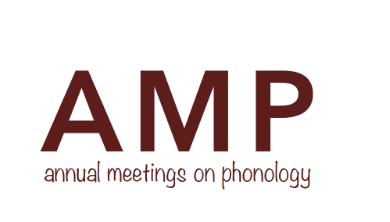Tashlhiyt Intonation Alignment in MaxEnt
Abstract
MaxEnt assigns an output probability to every candidate, thereby presenting a challenge if harmonically bounded forms are to be excluded from the output set. This paper argues that simple and collective harmonic bounding diverge in their compatibility with that goal. Under simple harmonic bounding, it is possible to devise weights that assign the bounded candidate, but not its bounders, probabilities indistinguishable from zero. This cannot be done for collective harmonic bounding absent a constraint specifically targeting the bounded candidate. An analysis of intonational contour placement in Tashlhiyt Berber is developed, showing that this result for simple harmonic bounding does not depend on the presence of violations incurred only by the bounded form. In Tashlhiyt, speakers show variation conditioned by sonority, syllable weight, etc., in the realization of an intonational contour that marks certain syntactic constructions. In the analysis developed here, each violation incurred by an illicit harmonically bounded form is also incurred by a licit candidate. Nonetheless, MaxEnt assigns the harmonically bounded forms, but not the licit forms, probabilities near zero. This shows that there is a fundamental difference in the probability combinations that simple and collective harmonic bounding make possible under MaxEnt.
How to Cite:
Kaplan, A., (2025) “Tashlhiyt Intonation Alignment in MaxEnt”, Proceedings of the Annual Meetings on Phonology 1(1). doi: https://doi.org/10.7275/amphonology.3036
Downloads:
Download PDF
327 Views
286 Downloads
